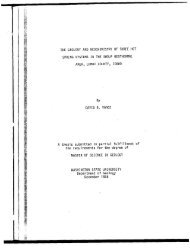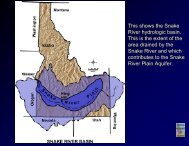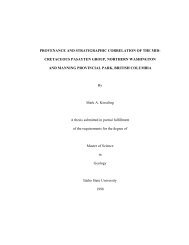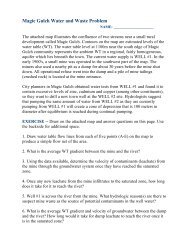larger file size version in PDF format
larger file size version in PDF format
larger file size version in PDF format
You also want an ePaper? Increase the reach of your titles
YUMPU automatically turns print PDFs into web optimized ePapers that Google loves.
RESISTING FORCES<br />
Resist<strong>in</strong>g forces act oppositely of driv<strong>in</strong>g forces.<br />
The resistance to downslope movement is dependent on<br />
the shear strength of the slope material. And shear<br />
strength is a function of cohesion (ability of particles to<br />
attract and hold each other together) and <strong>in</strong>ternal friction<br />
(friction between gra<strong>in</strong>s with<strong>in</strong> a material).<br />
Chemical Weather<strong>in</strong>g (<strong>in</strong>teraction of water with surface<br />
rock and soil) slowly weakens slope material (primarily<br />
rock), reduc<strong>in</strong>g its shear strength, therefore reduc<strong>in</strong>g<br />
resist<strong>in</strong>g forces.<br />
IMPORTANT: The shear strength of the slope material is<br />
decreased by <strong>in</strong>creas<strong>in</strong>g the pore water pressure<br />
(pressure that develops <strong>in</strong> pore spaces due to the<br />
<strong>in</strong>creased amount of water).<br />
GEOL g406 Environmental Geology S. Hughes, 2003

















